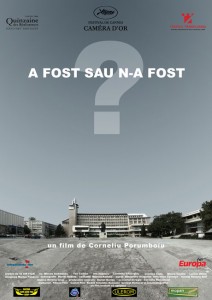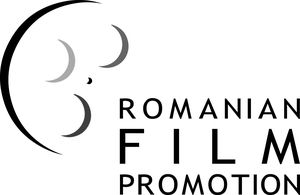10 Dec 2010
Cultural policy overview on Romanian Film Industry

Romanian Movies Awarded Important European Prizes
European recognition of Romanian films helped Romania to see and promote its values. In 2001 and 2002, Romanian directors participated in the Directors' Fortnight section in conjunction with the Cannes Film Festival. For example, Cristi Puiu's first feature film Stuff and Dough (Marfa si banii) and Cristian Mungiu's Occident.
In 2005, Puiu's second feature, The Death of Mr. Lăzărescu, won the prize Un certain regard at the Cannes Film Festival. It won many other prizes around the world, becoming the most awarded Romanian film ever made.
At the Cannes Film Festival in 2006, Corneliu Porumboiu won the Camera d'Or Best First Feature Award for 12:08 East of Bucharest (A fost sau n-a fost?). Catalin Mitulescu (The Way I Spent the End of the World) was in the running for the Un Certain Regard section.
A year later, again at the Cannes Film Festival, Cristian Nemescu's posthumous California Dreamin' won the prize of Un Certain Regard section, while Mungiu's 4 Months, 3 Weeks and 2 Days received the Palme d'Or in the Cannes film festival – the first time a Romanian filmmaker had ever won this prize.
At the 2008 Cannes Film Festival Marian Crişan's Megatron won the Palme d'Or for short film.
In 2010, If I Want to Whistle, I Whistle (Eu cand vreau să fluier, fluier) directed by Florin Şerban won the Jury Grand Prix Silver Bear.

The starting point: Romanian Cultural Policies applied to Film Industry
According to the 2005 version of www.culturalpolicies.net, there exists at the national level, a body structured along the model of the French Centre National du Cinéma - The National Centre for Cinema (CNC) (http://www.cncinema.abt.ro in Romanian) in Romania. This organization has drawn a strategy for the development of the film sector, focusing on the following main priorities:
- development of the film industry;
- development and diversification of the Romanian film market;
- promotion of start-ups; promotion of Romanian films;
- international co-operation and participation in the specialized European structures and programmes in this field of activity;
- promotion and preservation of the national film heritage.
An annual budget of around 8 million euros is levied from leisure-industry companies, which get corresponding tax advantages. No money comes directly from the government, though Romania's planners are hoping to add the National Lottery to their sources of revenue. Film-makers can get up to 50 per cent of their budget from the CNC after submitting a project proposal of what they intend to produce during competitions.
The Cinema Law (No. 889) came into effect in Romania on 9 December 2002. According to data provided by the 2005 CNC Yearbook, there are 23 film producing and 11 major distribution companies in the country, all of them privately owned. The producers secure their film budget by applying for public funds based on individual projects via the above-mentioned competitions. They try to find the rest through private sources or through funds from Eurimages, of which Romania is a part of.
Although there is some debate over the rules and the process of funding, CNC was developed in consultation with local film-makers and is constantly reviewed and improved. Eugen Serbanescu, the general manager of CNC said "…any regulation can be improved, and we're trying to make it more transparent, more direct."

The main issues of Romanian cinema: the lack of cinemas and audience development
The problem facing Romania's emerging cinema is not production funding but in the awful state of the country's exhibition infrastructure. Cluj, a university town of 260,000 people, has only three working cinemas. Many of the small cities all around Romania have lost their cinemas long ago. After the fall of the communist regime the venues were transformed into bars, pubs, discos, and then eventually closed.
When Transilvania International Film Festival (www.tiff.ro) twinned with Sibiu (a Romanian city that was the 2007 European Capital of Culture) they had to build a temporary venue to screen the films since Sibiu had only one screen - and even that had not been in use for some time.
Multinational companies like the Israeli-owned, Warsaw-based Cinema City International begun to build multiplexes in Bucharest, but could have their work cut out filling them: the amount spent on cinema going by the average Romanian in 2006 was precisely ¢4 - an increase of just ¢1 since 1996 and one of the lowest figures in the world. However, these multiplexes work to build the future audiences for Romanian movies, even if the majority viewed American commercial, entertainment movies.
The Romanian Film Promotion (www.romfilmpromotion.ro) organizes all sorts of projects to promote Romanian movies and to boost the Romanian audience participation.
The growth of the industry after 2007 (when Romania entered EU)
Using official data from the study The Contribution of Copyright-based Industries of the Romanian Economy, which was carried out by the Centre for Research and Consultancy on Culture in partnership with the Romanian Copyright Office and the National Economy Institute, creative industries are highly important for the national economy from the point of view of its contribution to the gross domestic product (GDP), labour force, international trade and investments. So, the most important developments have been registered in cinema films and video production (over 12 times more); artistic and literary creation and interpretation (9.5 times more); consultancy and other software products supply (7.6 times more); advertising (over 6.5 more); and sound recording editing (6.2 times more). For further details please go to http://www.culturadata.ro/Cercetari%20finalizateEN.html
Challenges after the financial crisis
The main challenges to small and medium sized Romanian companies in the culture industry were underlined in a recent study in 2009 by the Centre for Research and Consultancy on Culture titled, The Economic Crisis' Effects on Cultural Operators. The results of the research pointed out that in the first half of 2009, the most notable decline concerning funding sources was related to sponsorship, public funding, self funding, scholarships and grants. Also, 78 percent of the businesses indicated a decline in their turnover rate, between January 2009 and July 2009, compared to the same period in 2008. One of the biggest challenges is the rise in company expenses caused by an increase in the exchange rate. This is because many expenses (eg. rent, copyright, translations, artists' payments, etc.) are paid in foreign currency.
The most prominent effect that the crisis had on cinema is a decrease in sales. There was a decline in advertising from televisions and advertising agents. According to professionals in the field, the market registered a severe decline in 2009 in comparison with 2008. The number of international partnerships also decreased. The crisis also had an impact on human resources as professional technicians were retrenched or reassigned. The CNC funds were cut. For those who took loans in the previous years, they suffered a negative outcome due to the fluctuations of the Euro exchange rate.
There are also some positive outcomes of the economic crisis: One of these effects is expected to occur in the distribution process of the movies that are being produced now. International agencies will now pay a very small minimum guarantee. Another positive outcome is that there could be a drop in rent prices.
Online resources and further reading:
http://en.wikipedia.org/wiki/Cinema_of_Romania
Reviews in the New York Times of five Romanian Films: http://www.nytimes.com/interactive/2008/01/18/magazine/20080120_ROMANIAN_FEATURE.html
http://hcl.harvard.edu/hfa/films/2007fall/romanian.html
http://www.icr-london.co.uk/docs/press/romanian-film-season.pdf
http://www.filmstudies.pitt.edu/romanianfilmseries/index.html
http://www.bfi.org.uk/sightandsound/feature/49399
http://www.kinokultura.com/specials/6/introduction.shtml
www.tiff.ro
A database of all Romanian film ever made: http://en.wikipedia.org/wiki/List_of_Romanian_films
About the writer:
Florentina Bratfanof has worked in the theatre field in Romania in the past 10 years, first as a Press Officer for ACT Theatre, the first independent theatre in Romania, then as a cultural journalist for an online platform website also about theatre events and projects. She has been involved as well the Press Office of several theatre festivals: the 2008-2009-2010 editions of Romanian National Theatre Festival, Bucharest, Romania; Underground Arad Fun 2009, Arad, Romania; 36th International Festival of Alternative and New Theatre, Novi Sad, Serbia.
Similar content
posted on
25 Jun 2007
posted on
15 Feb 2011
posted on
13 Aug 2011
posted on
20 Jan 2011
posted on
02 Nov 2010
posted on
25 Jul 2011



